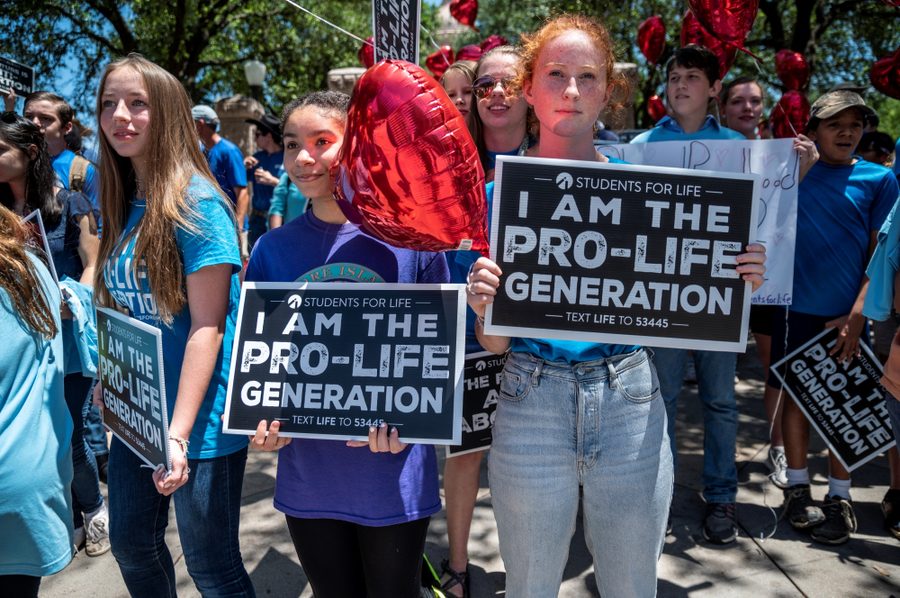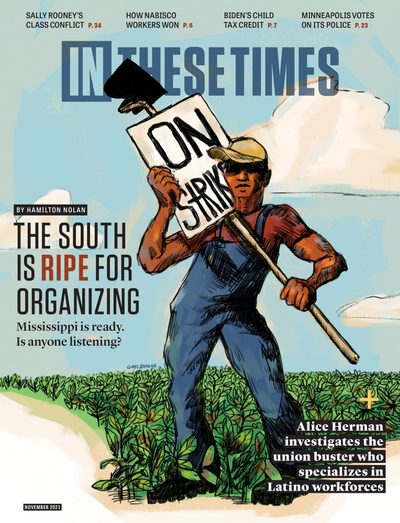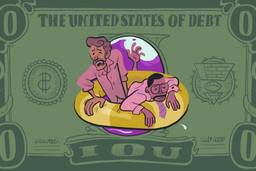The People the Left Lost to the Anti-Abortion Movement
After Roe, the Church and the Right outmaneuvered us for the moral high ground.
In These Times Editors

Writing in 1976, three years after the landmark Roe v. Wade decision, ITT columnist Roberta Lynch covered the anti-abortion movement as it ballooned in size, propelled by a crusading Catholic Church and an opportunistic far right. She examined how this hardline movement was able to mobilize people from various political walks of life, including veteran civil rights and anti-war activists. Lynch raised a question still relevant today, as Texas turns the clock back to pre-Roe days: How can the Left generate the same “depth of concern… for the fate of the living”?
In 1976, Roberta Lynch wrote:
A friend recently described to me her shock on hearing a white middle-aged secretary passionately denounce the Supreme Court of the U.S. as “nine men who want to try to tell women what they should be doing.” The words may not be all that surprising, but the context is: the woman was a speaker at an anti-abortion rally. This odd meeting of feminist rhetoric and anti-feminist perspective is but one of a score of contradictions that underlie the movement that soared to prominence in the recent presidential race. The anti-abortion movement is a complex mix of religion, politics, and gut feelings — and it cannot be ignored.
On the whole, feminists have tended to view the anti-abortionists as religious zealots — largely Catholic — embarked on a new crusade. The left has commonly seen them as part of the resurgence of right-wing movements on the American political scene. While both descriptions are partially accurate, it is precisely the refusal of the movement to fit neatly into either category that has made it a force to be reckoned with.
It is impossible to fully understand the anti-abortion movement without understanding the role of the Catholic Church within it. The Church has never before ventured so forthrightly into the political arena in this country. But then the Church has seldom been so threatened by an act of government. Legalization of abortion undermines its moral authority in the area that was once its chief domain and in which its authority has steadily eroded for the last decade — sexual relations.
And the Church has responded with all the fervor of an old nun who discovers two sixth graders kissing in the cloak room. In New York, a woman who confesses to having had an abortion is given a new kind of penance: go and join Birthright (an anti-abortion group). In Philadelphia, local parish charity organizations mobilize women members to attend anti-abortion demonstrations. In Chicago, the Cardinal issued a letter to be read at Sunday mass just before the elections strongly hinting that good Catholics will vote only for anti-abortion candidates.
More than any other single force the Church has contributed to the aura of moral zeal that the movement exudes. But while the Catholic Church may be the backbone of the anti-abortion organizations, the rank and filers are not all Catholics and spokespeople carefully stress the movement’s multi-denominational makeup. Conversely, and more ironically, despite the most diligent efforts of the Church, many Catholics not only avoid the movement, but support legalized abortion. A recent survey in the Chicago suburbs indicated that 50 percent of all Catholics and 84 percent of Catholic women are in this camp.
Accusations of right-wing involvement in the movement are also partly true. James Buckley, the most conservative of senators, has been the darling of the anti-abortionists. The right, in general, has set out to use the movement for political ends. They sense its potential not just to aid in the election of right-wing candidates, but also to provide ammunition in the broader ideological struggle. The anti-abortion movement in their hands becomes another cry for preservation of “traditional” (read “conservative”) family patterns and social values.
But while the right may be working hard to influence its direction, there is no doubt that the anti-abortion movement represents a variety of political views. It even includes people who were active in the anti-war and/or civil rights movements and who see their current activity as heir to those earlier struggles.
More important, many women who comprise the anti-abortion movement are neither following religious orders nor doing ideological battle; they are convinced that “respect for human life” is at stake. Of course, it is another of the movement’s ironies that it places respect for the future life of a fetus over the actual life of the woman who bears it.
But there is also an irony in our own position that we — the women’s movement and the Left — must confront directly: that we who fight for justice, equality and human rights are in conflict in this case not primarily with the powers that be of this society, but with large numbers of women motivated by a fundamentally human, if one-sided, impulse.
It is in a sense our own failure that we have not been able to touch the same depth of concern in them for the fate of the living. In a society in which schoolchildren go without breakfast or lunch, in which men batter their wives, and in which workers manufacture chemicals that eat out their lungs, it is a singular tragedy that so much potentially positive energy is consumed in the defense of a fetus.
This odd meeting of feminist rhetoric and anti-feminist perspective is but one of a score of contradictions that underlie the movement.
I am reminded sadly of an article I read on the way the right mobilized women in Chile to help lay the groundwork for the overthrow of the Allende government. The women were not “political” and they were not all upper- or middle-class (though such women led the movement). But they were moved to action by forceful campaigns appealing to their “natural feminine” concern for children and for future generations.
The anti-abortion movement is already overwhelmingly white — and it has not spoken out in a way that addresses minority women who are concerned about abortion and sterilization policies. It has already shown its willingness to identify with almost any politician who will support its goals — whatever their stand on other issues. And it has already illustrated its willingness to sacrifice poor women to its narrow goal — by vigorously supporting the cutoff of Medicaid funds for abortion.
All these trends are likely to push it farther into the arms of the Right as the movement develops. We need to assess whether we can only watch it go, or whether we can yet convince the women at its base to abandon their opposition to legalized abortion in favor of struggles that can create a society to improve life for the living.








